Autumn olive leaves and berries
Image credit: August Camp
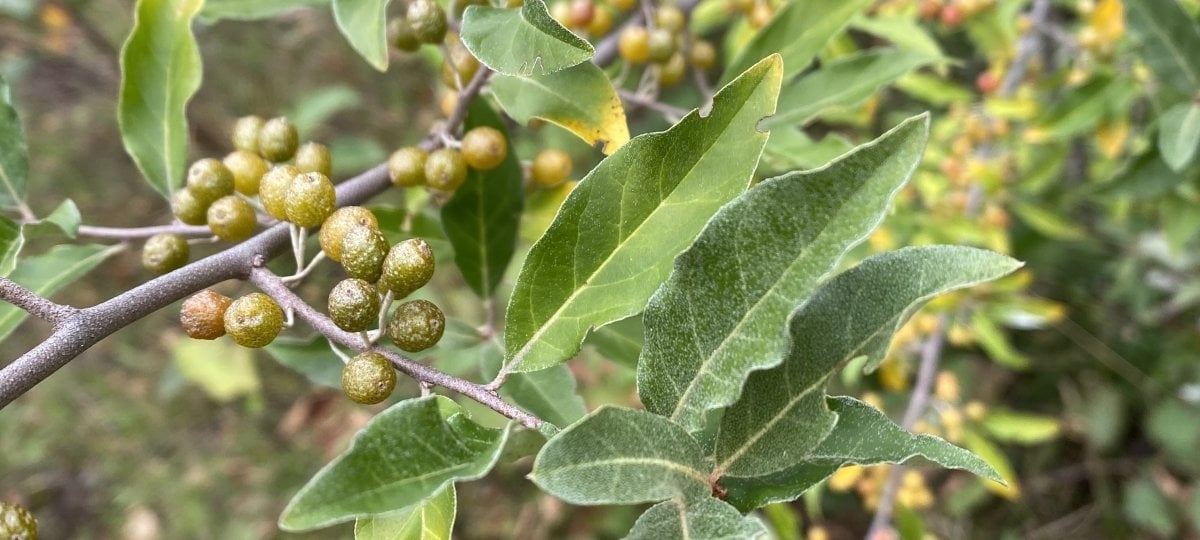
Autumn olive leaves and berries
Image credit: August Camp
Autumn olive is a small, woody tree known for invading open prairies, disturbed areas, and woodland edges. It houses nitrogen fixing bacteria on its roots, allowing for rapid growth and colonization, while also altering soil conditions.
Another key identifying feature of autumn olive are the root nodules visible on plants when physically pulled from the ground. These nodules are bumpy and white, and house bacteria in the genus Frankia, allowing for nitrogen fixation.
For more information, visit Woody Invasives of the Great Lakes (WIGL) Collaborative and Midwest Invasive Species Information Network (MISIN).
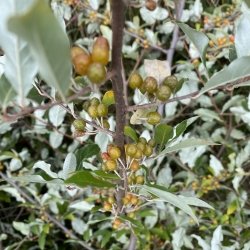
Autumn olive with yellow drupes
Image credit: August Camp
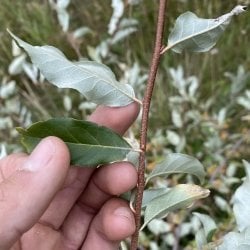
The speckled stem of autumn olive
Image credit: August Camp
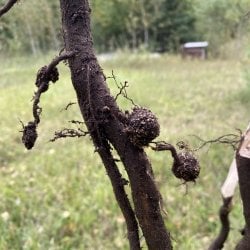
Autumn olive roots
Image credit: August Camp
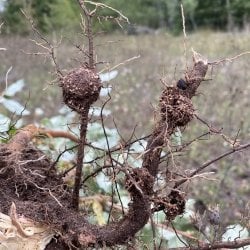
Root nodules on autumn olive
Image credit: August Camp
Autumn olive is a prevalent invasive in downstate Michigan, and has a spotty distribution throughout the upper peninsula. Managing this species is similar to managing other woody invasives like common and glossy buckthorn.
Note: Autumn olive can easily regrow if large amounts of root mass is left in the ground, so care should be taken to remove as much of the root from the ground as possible. Wearing protective gloves and sleeves is encouraged due to the thorns present on this plant. Hanging or burning removed plant material is acceptable, however, care should be taken to remove all present fruits before transporting or hanging the pulled material.
Species such as beaked hazelnut (Corylus cornuta) and downy arrow-wood (Viburnum rafinesquianum) are native understory shrubs that inhabit forest edges similar to autumn olive. Red-osier dogwood (Cornus sericea) and highbush cranberry (Viburnum trilobum) are also good alternatives for replanting in wetland edges and riparian areas.